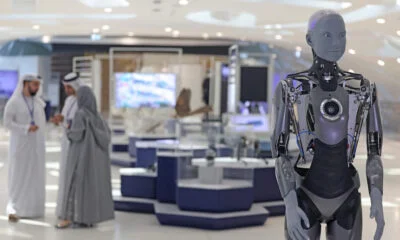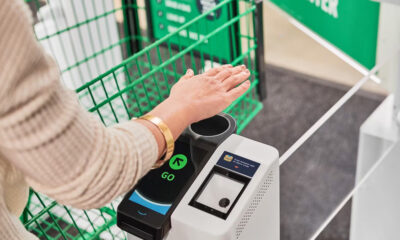News
Mimecast Releases Its CyberGraph AI Email Security Tool
If a malicious email message is detected, CyberGraph will display a color-coded contextual warning banner to warn the user and encourage them to take the right action.

Since the outbreak of the COVID-19 pandemic forced many businesses around the Middle East to close their offices and abruptly transition to remote working, email phishing attacks have increased both in number and sophistication. This concerning new trend has put the topic of email security as a top priority for many businesses in the region.
According to Mimecast, a provider of cloud cybersecurity services for email, employees now click on three times as many malicious emails as they did before the term “social distancing” entered our collective lexicon.
Determined to better protect its customers against this growing threat, Mimecast has just launched a new artificial intelligence (AI)-enabled tool for email security, called CyberGraph. The tool promises to keep email phishing attacks at bay using machine learning algorithms capable of detecting anomalous behaviors that could be indicative of a malicious email.
“CyberGraph leverages our AI and machine learning technologies to help keep employees one step ahead with real-time warnings, directly at the point of risk,” explains Josh Douglas, threat intelligence lead at Mimecast. “Phishing and impersonation attacks are getting more sophisticated, personalized, and harder to stop. If not prevented, these attacks can have devastating results for an enterprise organization. Security controls need to be constantly updated and improved to outsmart threat actors,” he added.
Whenever CyberGraph determines an email message to be malicious, it displays a color-coded contextual warning banner to warn the user and encourage them to take the right action, such as mark the email as spam.
Also Read: Is Your Phone Hacked? How To Find Out & Protect Yourself
In addition to its ability to distinguish malicious email messages from legitimate ones, CyberGraph can also disarm trackers embedded in emails to keep unauthorized third parties from getting their hands on information that could be used to orchestrate highly targeted phishing attacks.
Like other cybersecurity solutions powered by machine learning algorithms, CyberGraph’s effectiveness will keep improving over time as more users adopt it to protect their inboxes.
News
Mamo Completes $3.4M Funding Round To Enhance Fintech Services
The startup will use the influx of cash to expand into Saudi Arabia and across the wider GCC while improving its product offering.

UAE-based fintech Mamo has announced the completion of a $3.4 million funding round that will help the startup extend its market presence and improve its product offering. Investors included 4DX Ventures, the Dubai Future District Fund and Cyfr Capital.
Mamo’s platform offers “payment collection, corporate cards and expense management” to help small and medium-sized businesses consolidate and streamline their operations. With the latest influx of capital, Mamo will further develop its comprehensive suite of services and begin testing its product lines in Saudi Arabia, further extending its footprint across the GCC.
Imad Gharazeddine, co-founder and CEO of Mamo, stated: “We’ve been in the market for a while now and are incredibly proud of what our team has achieved. The holistic and expansive nature of our product offering has helped us continue to grow sustainably. This additional funding will allow us to reach our medium-term goals even faster. The support from new and existing investors is a testament to our strong expertise and the ability to deliver on our customer promise”.
Daniel Marlo, General Partner of lead investor 4DX Ventures, added: “We have immense trust in Imad’s vision, leadership and Mamo’s innovative approach to provide a user-friendly and comprehensive financial solution for SMEs that makes financial management more accessible and efficient. We are proud to partner with them and support their mission”.
Also Read: A Guide To Digital Payment Methods In The Middle East
Amer Fatayer, Managing Director of Dubai Future District Fund’s investment team, also commented: “Mamo’s localized product lines serve as an infrastructure for SME payments and spend management in UAE, a segment that is underserved by the country’s current banking infrastructure. The team has taken a product-first approach to consolidating SMEs’ financial journeys and building a fintech solution deeply embedded in a business’s core operations”.
To date, Mamo has raised around $13 million in investment funding and now boasts a team of 30 people. The company’s intuitive financial services platform has allowed over 1,000 businesses to consolidate their financial operations and significantly reduce payment fees.
-

 News4 weeks ago
News4 weeks agoAmazon Prime Day 2024: Get Ready For 6 Days Of Amazing Deals
-

 News4 weeks ago
News4 weeks agoSamsung Unpacked 2024: What To Expect From The July 10 Event
-

 News4 weeks ago
News4 weeks agoCoursera Report Shows Surge In UAE Interest In AI Upskilling
-

 News4 weeks ago
News4 weeks agoMeet Dubai’s Groundbreaking Smart Robot Delivery Assistant













